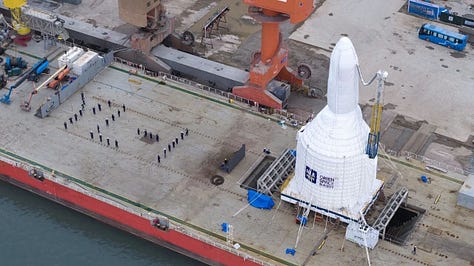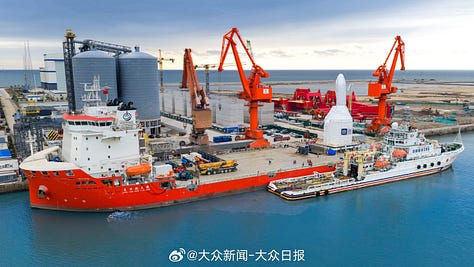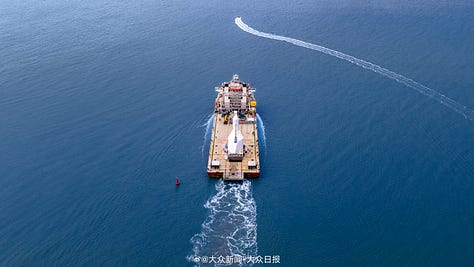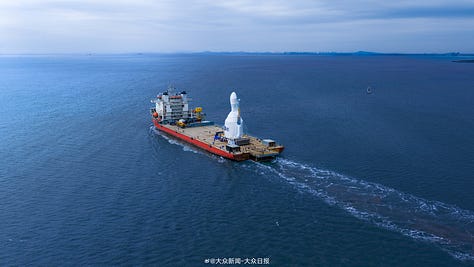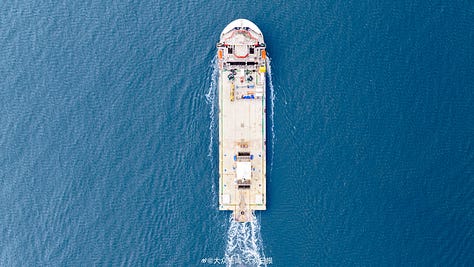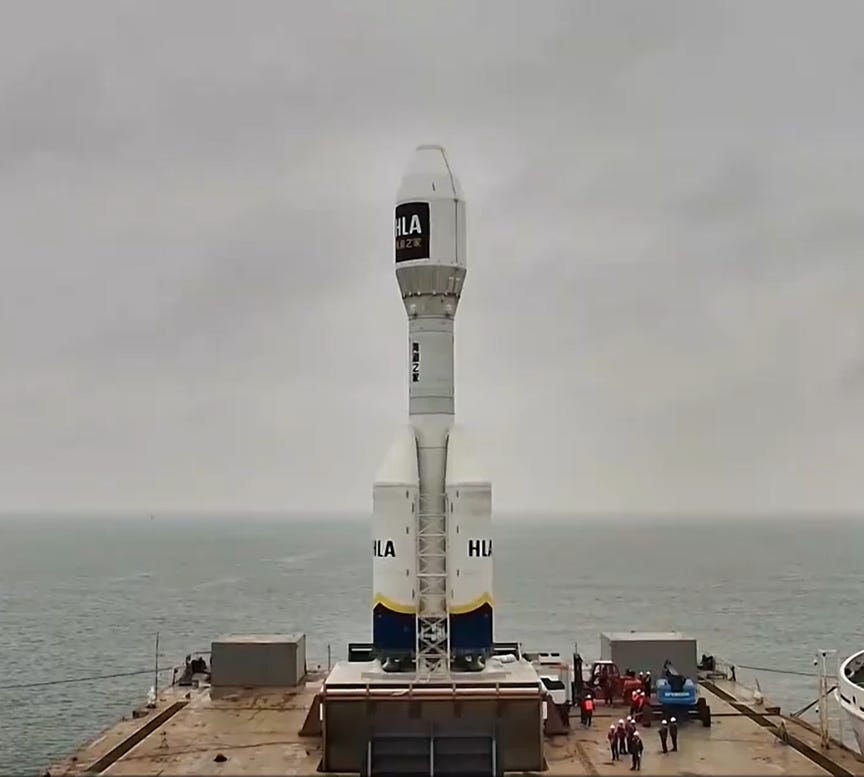Gravity-1 Returns with Customer Carrying Sea-Launch! [Gravity-1 Y2]
Three satellites were delivered atop of the massive solid-fuelled launch vehicle.
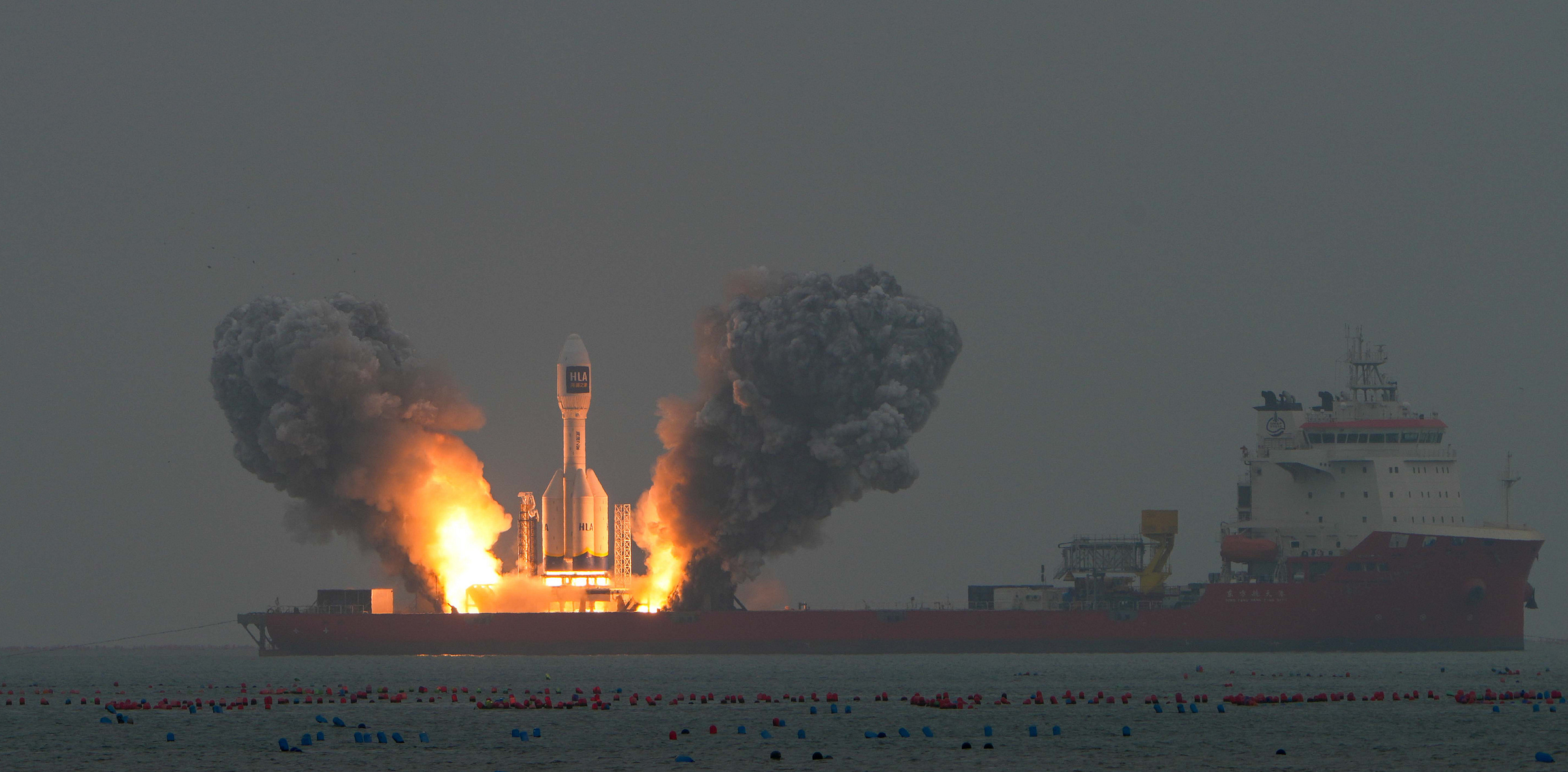
Orienspace’s Gravity-1 launch vehicle blasted off from a sea-launch platform in the Yellow Sea off the coast of Haiyang (海阳市), Shandong (山东) province, at 10:20 am China Standard Time (02:20 am Universal Coordinated Time) on October 11th, for a flight into sun-synchronous orbit carrying three customer satellites.
Two of the spacecraft were the 50-kilogram Shutianyu 01 and 02 (数天宇星01/02试验星), developed by Geespace, with the name literally translating to count the sky test satellites. These satellites are expected to detect, monitor, and image orbital debris, including dead satellites and abandoned rocket stages.
The other satellite was Jiangsu Geological Satellite (江苏地质号卫星), also called Jixing Wideband 02B07 (吉星宽幅02B07星), from Changguang Satellite Technology Co Ltd (长光卫星技术股份有限公司) on behalf of the Jiangsu Provincial Geological Bureau (江苏省地质局). Jiangsu Geological Satellite is said to be a remote sensing satellite with a 0.5-meter resolution for measuring mineral resources as well as monitoring land usage in Jiangsu (江苏) province. The satellite will also work with the Jilin-1 (吉林一号) remote sensing constellation.
This launch mission had a sponsor too, with HLA Group (海澜之家), a fast fashion clothing company, having branding across the launch vehicle. An official live stream was also broadcast in partnership with Huanqiu.com (环球网).
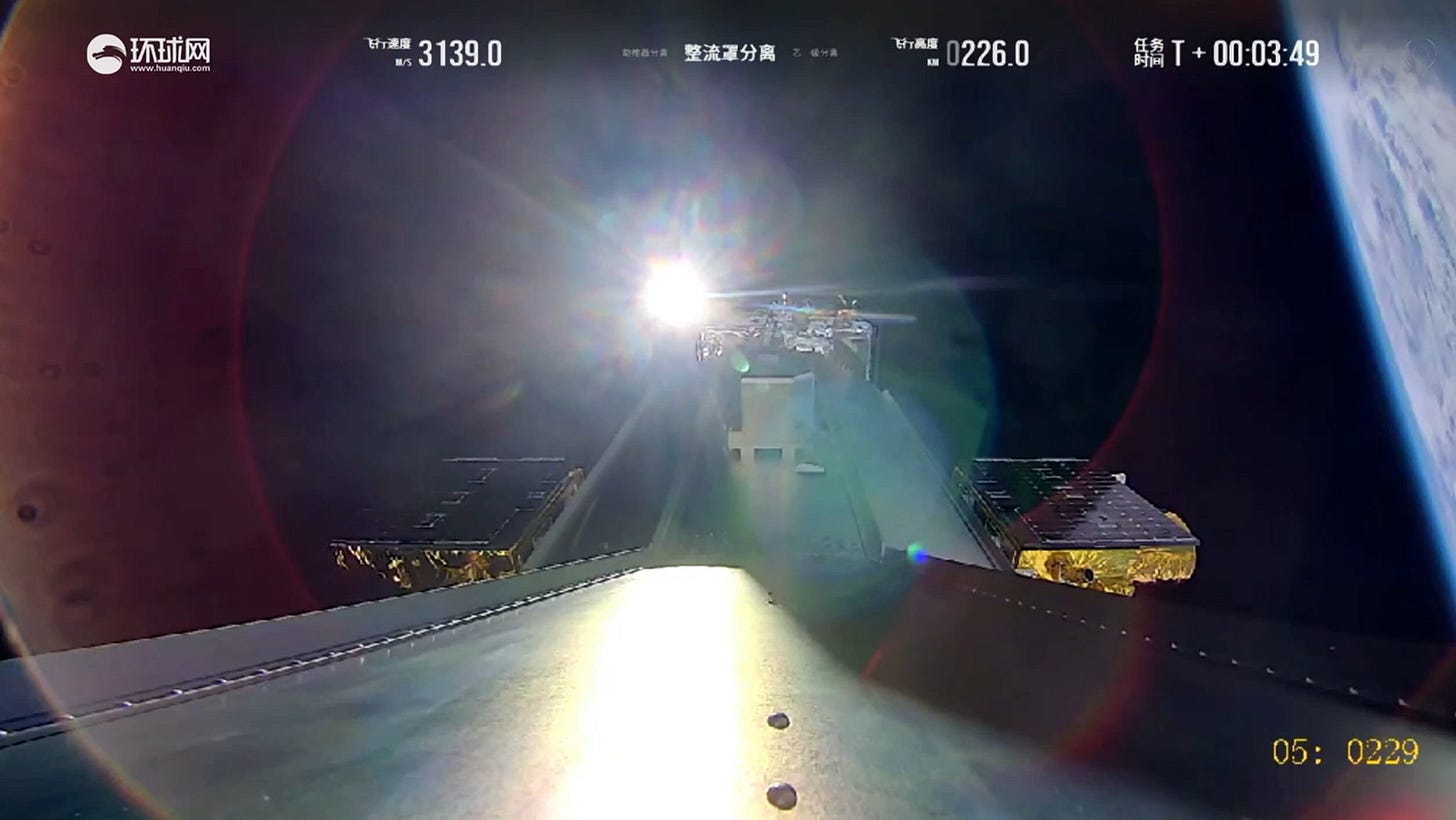
Following today’s launch mission, Orienspace shared that they have implemented improvements in Gravity-1’s stability and control consistency, allowing the vehicle to better target multiple orbits. Additionally, it was reported that Gravity-1 has moved from its testing phase to ‘normal commercial operation’, as the two flights to date have properly validated the reliability of the launch vehicle. In the near future, the company plans to mass-produce the vehicle to meet constellation launch needs.
After this liftoff, Gravity-1 did not heavily damage its flame deflection trench or launch support infrastructure. It did, however, light its protective pre-launch cover on fire, which was quickly put out afterwards. That cover is used to control humidity around the vehicle while at sea, with its cost stated to be in the hundreds of thousands of Yuan.
Today’s launch was the 2nd mission for Gravity-1. This was also the 61st launch from China in 2025.
Liftoff video via Orienspace, 航天面面观, and China航天 on Weibo.
Check out more about Orienspace
Orienspace's Gravity-1 to Fly Again After Long Hiatus
Twenty-one months ago, Orienspace appeared on the global space launch radar through the debut flight of its Gravity-1 launch vehicle. That launch saw massive solid rocket boosters ignite on a sea-launch platform in the Y…
What is Gravity-1?
This section is for those less familiar with China’s various commercial launch vehicles.
The Gravity-1 is a commercial launch vehicle developed and manufactured by Orienspace. Gravity-1 utilizes solid propellant across all its three 2.65-meter-diameter atmospheric ascent stages, with a solid-fuelled fourth-stage for orbital insertion of payloads housed within a 4.2-meter-diameter fairing.
The payload capacity of the launch vehicle is currently as follows:
6,500 kilograms to low Earth orbit
4,200 kilograms to a 500-kilometer sun-synchronous orbit
On the launch pad, Gravity-1 stands 30 meters tall and weighs 405,000 kilograms. The first-stage consists of four solid rocket boosters, each generating 150 tons of thrust using an unspecified solid propellant, for a combined thrust of 600 tons. The second and third stages are both high-altitude optimized solid rocket boosters burning the same propellant, though specific thrust levels and burn times for all stages have not been publicly disclosed.
Currently, OrienSpace’s Gravity-1 is launched from floating sea platforms once prepared for launch.
